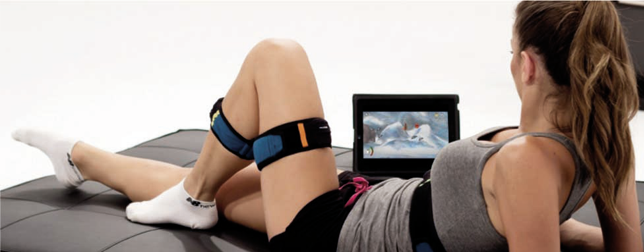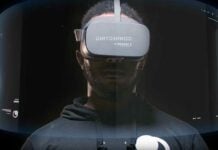We already introduced a range of wearable devices for rehabilitation in one of our exhibitor overviews for the WT | Wearable Technologies Show 2015 MEDICA in November but of course there are more companies offering solutions to recover after an accident or stroke.
Moticon, WT | Wearable Technologies Innovation World Cup winner 2013-14, will showcase their latest developments at the 10th anniversary of the WT | Wearable Technologies Conference 2016 EUROPE in Munich on January 26-27. The wireless sole captures foot dynamics, a software analyzes data and generates reports – a perfect toolkit for scientific motion analysis, physio and professional athletes and orthopedics. It’s the first system that allows completely mobile gait and motion analysis to monitor contact forces, gait lines, mean pressure distribution, symmetry, jumping performance, leg extension power and symmetry.
CoRehab offers a clinical endorsed platform for rehabilitation professionals and trainers that delivers a complete bundle of care for the patients. Riablo consist of 5 inertial motion sensors worn through elastic straps which transmit the movements to a tablet or PC via Bluetooth. The user can see what he is doing on the screen, thanks to a real-time and highly accurate biofeedback. The system can help orthopaedic, neurological, post traumatic patients. A session only lasts 15-25 minutes and should be seen as a complementary tool to traditional treatments.
GLOREHA supports upper limb rehabilitation. The lightweight glove performs all the combinations of joint flexion-extensions. If the patient has partial capabilities, he can actively complete his movements. The system comes with a 3D screen animation which involves and animates the patient.
270 vision’s BPMphysio delivers live, accurate assessment of the range and quality of joint movement for post trauma assessment and after-surgery monitoring. A single sensor streams movement data to software displaying the results live as an animated avatar which is recorded for immediate on-screen comparison to assess progress and recovery trends. Further the system can measure impingement zones and muscle strength; and gives live feedback on the fitness of a joint and neuromuscular coordination and shows precisely where in the joint motion a tightness or paint point might be occurring.
Cybernoid Technologies focuses on providing devices which help individuals suffering from spinal cord injury, polio affected, neuromuscular disorders in walking. Their product Cybolimb is developed for patients which have legs but cannot use them. Their robotic wearable non-invasive limb can be attached to the user providing power and support to allow them to walk, stand and sit.
Axiobionic’s Wearable Therapy® integrates surface electrical stimulation into wearable devices. The technology is made for patients suffering from long-standing injury, disease or disability – especially for patients who have not perfectly improved with common rehabilitation methods. The system makes muscles work on a daily basis; active muscle contractions have a beneficial effects that passive movement cannot deliver. Axibionics can be used for pain relief, muscle therapy, TripleFlex, Orthotics, Walkaid, MYoPro, Pediatric Rehab and help injured workers with EMS treatment to strengthen muscles.
WalkJoy and WalkingHealth can help people with Peripheral Neuropathy which have a number of balance, walking and foot-health problems. By restoring a more normal walking, issues like the chance of falling, the formation of sores and ulcers and ultimately amputations can be decreased. The devices are strapped below your knee and send signals to the healthy nerves when your foot strikes the ground. Those signals can replace the sensation you used to get from your feet so you can quickly gain confidence with every step. The captured gait parameters show irregularities in step patterns and can be used to improve balance and to reduce falls. The devices are FDA cleared.
The ReWalk Robotics Rehabilitation System is a lightweight, wearable exoskeleton with motors at the hip and knee joints. The wearer controls movement using subtle changes in the center of gravity, a graphical user interface shows a broad range of parameters and shows the progress in training. The system for example helps to reduce some medications, improve mental health, sleep and pain and improves posture and balance.
KineteK produces and develops wearable robotic systems and exoskeletons for rehabilitation, assistance and human-power augmentation. They specialize in upper limb exoskeletons to improve mobility, enhanced force capability and recovery of motor function. ALEx is recommended for physical rehabilitation in upper limb pathologies, such as neurological, musculoskeletal, orthopedic disorders and dysfunctions and in particular: Stroke, Shoulder Rehabilitation. It can provide guided assistance in the execution of complex upper limb motions. The exoskeleton comes in a dual arm configuration in order to allow the treatment of both left and arm motor impairments, supporting as well bilateral schemes of rehabilitation training.
NEOFECT’s RAPAEL Smart Rehabilitation System is designed to help rehabilitation for patients with central nervous system disorders. Along with task training, the system applies sights and hearing at the same time to increase the brain activity of the patient. Bio-Feedback accurately assess and analyzes the state of the patient; games motivate and analyze the training level to measure progress.
Re-Step™ is a non-invasive, portable, easy-to-use, and pocket-sized rehab system. Founded on the latest advances of neuroscience, the training system improves the walking and balance performance of stroke and brain trauma patients or people with CP. The device can both be used at home (if supervised by a physical therapist) or at a rehab facility. All you have to do is to put on a pair of special shoes whose sole height and angles change in a specific give order and that way allow motor learning and problem solving in real time. The system measures the parameters of the user’s gait, and progress data and gives treatment recommendations.
















